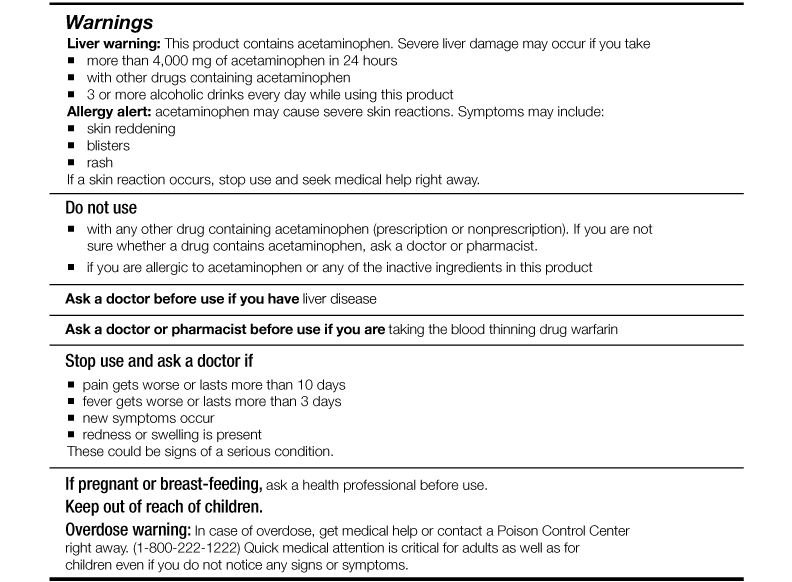The key information you need to know about an over-the-counter (OTC) medicine is in its “Drug Facts Label” that is printed on its packaging. For this reason, it is important to keep the packaging your OTC medicines come in. The label includes the name of active ingredient (s) in the medicine, the conditions the medicine is intended to treat, dosage instructions, and any warnings including side effects or possible drug interactions. Reading and following the label is important. Talk with your pharmacist or other healthcare providers if you have any questions about which OTC will best treat your or your family’s ailments.
Learn how to quickly and easily navigate the Drug Facts Label that accompanies all OTC medicines to find the information you need to take your medicines safely.
Over-the-Counter Label


Active Ingredient
This section lists the ingredient or ingredients that make the medicine work. For example, the active ingredient is what helps your fever go down, reduces your pain, or relieves your cough. It is especially important to pay attention to this section if you are taking more than one medicine—whether OTC or prescription—to make sure you are not taking too much of the same active ingredient. Too much of an active ingredient can be harmful.

Purpose
This section tells you what type—or category—of medicine it is, such as an acid reducer or antihistamine.

Uses
This section tells you what symptoms or illnesses you can expect the medicine to treat. You should only use products that treat the symptoms you have. If you are using more than one medicine, pay specific attention to the active ingredients so you don’t accidentally take too much.

Warnings
There are times when you should not take a particular medicine. The warnings section explains these times, and also tells you when a healthcare provider needs to be consulted, as well as when to stop taking a product.
The “warnings” section also lets you know if there might be side effects to a medicine and if you should be cautious during any particular activities, such as driving. This section also may tell pregnant and nursing women not to use certain products unless they’ve talked to their healthcare provider and reminds parents and other caregivers to keep medicine out of the reach of children.

Directions
A medicine’s directions tell you exactly how and when to take a medicine. Remember, you should never take more than the Drug Facts label says, and you should never take a medicine more often or for longer than the label says unless told to do so by your healthcare provider. Taking more of a medicine or for longer than directed can be dangerous.
Be very careful when giving medicine to children. Read and follow the age or weight instructions on the label and always use the correct measuring device when administering liquid medicines. If you have any questions, talk to your child’s healthcare provider.

Other Information
This section tells you other important information you should know about a medicine, such as where to store it. Take a look at the labels on the medicines you have in your house and make sure you are keeping them in the right place. Most medicines should be kept away from heat and humidity. And remember what you learned in the “warnings” section: Regardless of the medicine, always keep medicines out of the reach and sight of children.

Inactive Ingredients
The inactive ingredients section includes important information, especially if you or a loved one has a known allergy.

Questions?
Always talk to your healthcare professional if you have any questions. You can also call the toll-free number listed in this section.
Source: Acetaminophen Awareness Coalition: www.KnowYourDose.org
